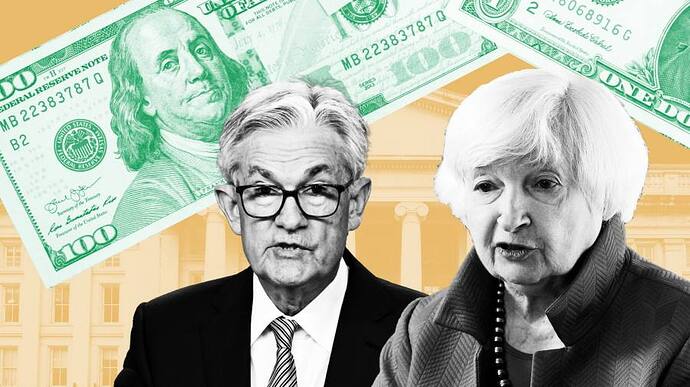The US economy, also known as the American economy, is one of the largest and most influential economies in the world. It comprises a highly diversified mix of industries, from finance and healthcare to manufacturing and technology. As a result, the country has a significant impact on global economic trends and activity.
The US economy is an example of a capitalist economy, meaning that private actors own and operate businesses with a profit motive. The US government plays a role in regulating certain aspects of the economy, such as minimum wage laws and safety standards, but it generally operates on a market-driven basis.
The history of the US economy is complex and varied, with different periods of boom and bust. However, the country has consistently been among the top economic powers in the world. From the late 1800s to the early 1900s, the US experienced a period of rapid industrialization, with major advances in manufacturing and transportation infrastructure. This period was marked by the rise of large corporations and the emergence of industrial leaders such as Andrew Carnegie and John D. Rockefeller.
The economy underwent a major shift during the Great Depression of the 1930s, as high levels of unemployment and widespread financial instability led to a greater role for the government in regulating and stabilizing the economy. This era saw the creation of programs such as Social Security and the New Deal, which aimed to provide relief and support to struggling citizens.
In the years following World War II, the US experienced a period of sustained economic growth, known as the “postwar boom.” This was fueled by increased consumer spending, advancements in technology, and expansion into new industries such as aviation and space exploration. The 1950s and 1960s were also marked by the rise of the middle class and a greater emphasis on consumer culture.
However, the US economy has also experienced significant challenges over the past few decades. The 1970s and 1980s saw a period of stagflation, with slow growth and high inflation rates. This was followed by the economic recession of the early 1990s, which was driven by the collapse of the savings and loans industry and the bursting of the housing bubble. The most recent economic crisis came in 2008, with the collapse of the housing market and a subsequent financial crisis that caused widespread economic instability.
Despite these challenges, the US economy remains among the strongest in the world. Its gross domestic product (GDP) is consistently ranked as one of the highest in the world, and the country is home to some of the largest and most profitable corporations in the world.
One of the driving forces behind the US economy is the service sector, which makes up a significant portion of the country’s economic activity. This includes industries such as finance, healthcare, education, and professional services. Manufacturing also remains an important part of the US economy, despite facing challenges such as competition from low-cost labor markets overseas. Major US industries include aerospace, technology, automotive, and pharmaceuticals.
Another key factor in the US economy is its trade relationships with other countries. The US is a major trading partner with many countries, including Canada, Mexico, China, Japan, and the European Union. Trade agreements, such as the North American Free Trade Agreement (NAFTA) and the proposed Trans-Pacific Partnership (TPP), have been hotly debated in recent years, as some argue that they lead to job losses and other economic challenges.
The US government plays a significant role in shaping the economy through its fiscal and monetary policies. Fiscal policies include taxation, spending, and regulation, while monetary policies focus on the regulation of interest rates and the money supply. The Federal Reserve System, commonly known as the Fed, is the central banking system of the US and plays a key role in these policies.
In recent years, the US economy has faced several challenges, including growing income inequality, rising healthcare costs, and declining social mobility. These issues have led to unrest and protests across the country, with many calling for changes to economic policies and greater economic opportunities for all.
Overall, the US economy is a dynamic and complex system that has faced both triumphs and setbacks throughout its history. While it remains one of the most powerful economies in the world, it also faces ongoing challenges related to inequality, trade, and other economic issues.
Disclaimer
6do Encyclopedia represents the inaugural AI-driven knowledge repository, and we cordially invite all community users to collaborate and contribute to the enhancement of its accuracy and completeness.
Should you identify any inaccuracies or discrepancies, we respectfully request that you promptly bring these to our attention. Furthermore, you are encouraged to engage in dialogue with the 6do AI chatbot for clarifications.
Please be advised that when utilizing the resources provided by 6do Encyclopedia, users must exercise due care and diligence with respect to the information contained therein. We expressly disclaim any and all legal liabilities arising from the use of such content.


















